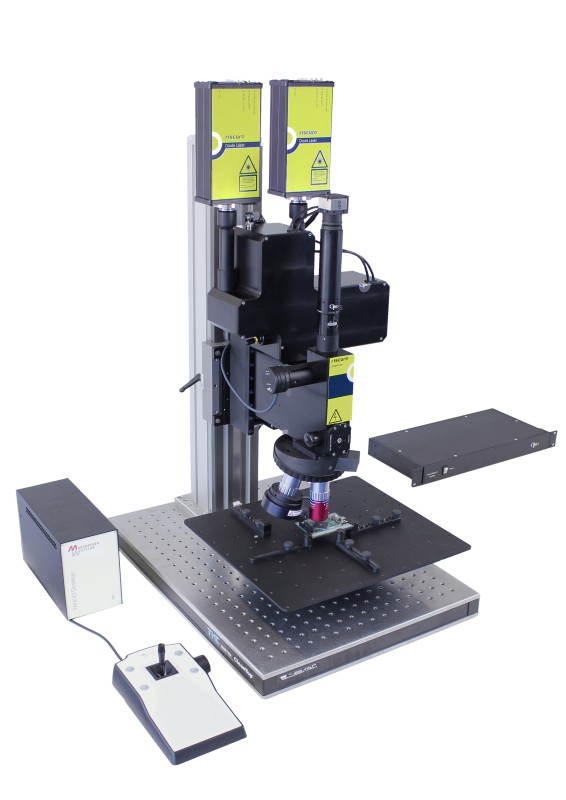Introduction
Protecting chips against laser fault attacks is one of the main security challenges in the smart card industry. With the Laser Station 2, a user can perform advanced laser fault attacks that meet the highest international standards to assess if a smart card 
The Laser Station 2 offers a set of new features meeting the latest timing and power requests from fault injection experts around the world. The special set of lasers with dedicated optics and the ultra-fast and flexible control create the ultimate fault injection test solution. Its integration with the Inspector software further ensures that automation and analysis are covered by extendible modules which are flexible and easy to use.
The Laser Station 2 contains powerful Red and NIR diode lasers (resp. 14W, 20W) out of the box. The red laser is designed for front- side testing of smart card chips and in combination with the optics it produces a spot size of 6 × 1.4 μm on the chip surface. This gives an accurate control over the chip area. The laser has sufficient power to penetrate through the gaps in the shielding commonly applied in today’s secure chips. The near-infrared laser is designed for back-side testing of smart card chips. This powerful diode laser penetrates the chip substrate to reach the transistors. Riscure partners with Opto (www.opto.de), a world-renowned optical design house in Germany, for the Laser Station 2. The optics and lasers of the system have been specifically designed to achieve the ultimate laser setup for fault injection testing.
Key features

- Contact us
-
Bartek Gedrojc 大虎
- Sales and Business Development Director Tools